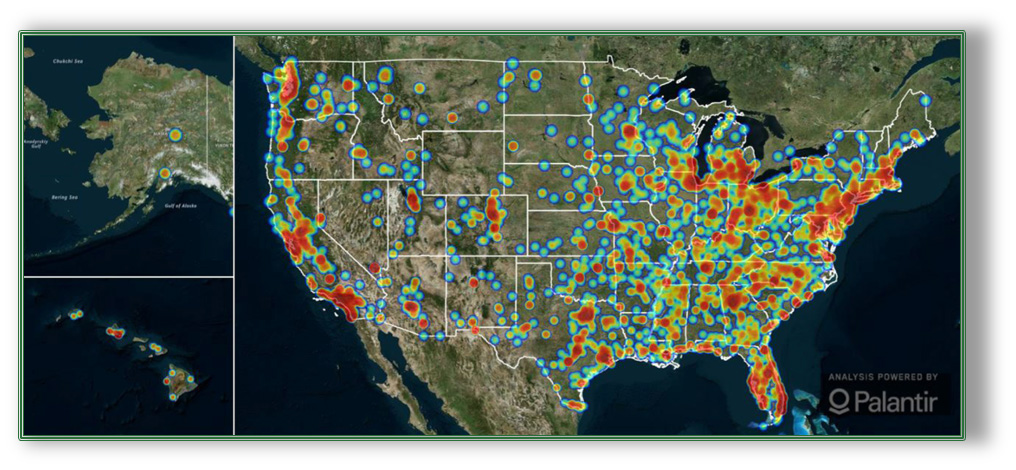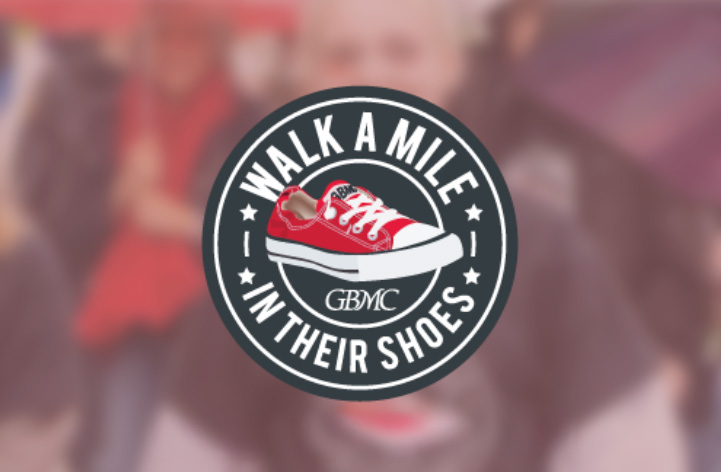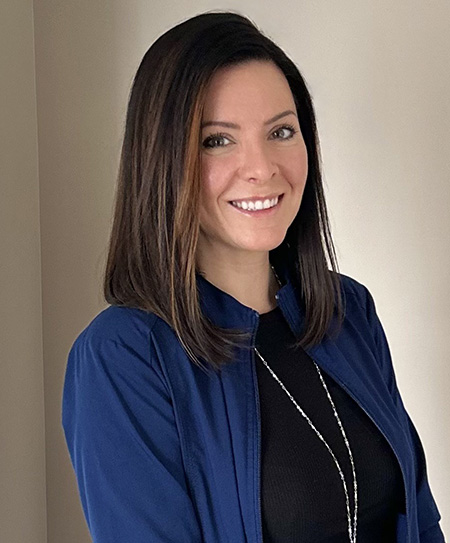Human Trafficking
The GBMC SAFE & DV Program offers free, specialized, and confidential services to victims of human sex trafficking.
Take Quick Action:
-
I need help for myself or someone I know.
Help for victims, survivors, & loved ones.
-
I am a provider who needs help for a patient.
Mission:
GBMC SAFE/DV Program’s Anti-Human Trafficking Initiative is dedicated to identifying, responding to, and preventing human sex trafficking in our community. We strive to provide trauma-informed, comprehensive medical-forensic care and advocacy support to survivors, collaborate with local and national partners to raise awareness, recognize and respond to the signs of trafficking, eliminate access barriers to treatment, and empower survivors. Together, we strive to create a world where every person is free.
Vision:
Our vision is a world without human sex trafficking, where all individuals are free from exploitation and abuse. We envision a future where survivors are treated with compassion and dignity, have access to no-cost specialized care and support within a comprehensive, victim-centered response program, and where communities are equipped with the knowledge and tools to prevent trafficking and protect vulnerable populations. Through our efforts, we seek to create lasting change and build a brighter future for survivors and communities.
What You Need to Know
- Human sex trafficking involves a controlling individual (i.e., a trafficker) who uses force, fraud, or coercion to facilitate a commercial sex act. Human sex trafficking also includes anyone under the age of 18 years old who is involved in commercial sex, regardless of whether the act is voluntary or if there is a trafficker involved.
- Commercial sex is any sexual act in exchange for something of value (money, drugs, material possessions, shelter, food, etc.).
- Force includes physical or sexual assault, confinement, or deprivation of life necessities such as food, water, or sleep. Fraud includes any deceitful practices such as the promise of a “better life.” Coercion includes threats of harm towards an individual or their family, threatened abuse of the legal system, or blackmail.
Human sex trafficking has been reported in all 50 U.S. states and can affect any community. It can be street-based, occur in private homes, brothels, hotels/motels, or on the internet.

National Human Trafficking Hotline heat map depicting over 23,000 victims in 2019.
Human sex trafficking can affect any age, gender, race, or socioeconomic status. Anyone can become victimized by human sex trafficking, although there are certain individuals at higher risk. Risk factors include young age, foster care system involvement, poverty, history of abuse, homeless, runaway, family dysfunction, substance abuse issues, gang involvement, LGBTQ+, mental health illness, or those displaced by civil unrest or natural disasters.
Human sex trafficking can occur in many ways and how it is depicted in the movies and on television isn’t generally accurate. Most traffickers are known to the victim and are not strangers to them. A victim may be targeted after a trafficker identifies a vulnerability or an unmet need. After a potential victim is identified, they may be recruited and groomed prior to being exploited. Recruitment refers to how a trafficker gains access to a victim and can occur in public places, schools, foster homes, or online. Grooming refers to a process in which the trafficker manipulates a victim to eventually control them. Grooming can involve gaining the victim’s trust, filling an unmet need, building a relationship, and creating dependency. After this process, a trafficker will begin to exploit their victim.
No one sign will confirm human sex trafficking but there are common indicators. Red flags include signs of physical and/or sexual abuse, signs of substance abuse, frequent sexually transmitted infections, frequent pregnancies or abortions, signs of malnourishment or exhaustion, isolation, changes in behavior, decreased interest in normal activities, frequent runaway, a romantic partner that appears controlling, or mental health symptoms (withdrawn, fearful, anxious, depressed, or suicidal). This list is not all-inclusive.
There are a variety of reasons a victim may not leave their trafficking situation. Barriers for a victim leaving include fear, shame, hopelessness, no access to money or their identification, substance abuse issues, prior attempts to escape were unsuccessful, or loyalty and love for their trafficker.
Safety is a priority. Call 911 in the event of an emergency. If you suspect minor human sex trafficking, immediately report this to law enforcement and the Department of Social Services. Do not attempt to intervene alone because situations can become very dangerous. Call the National Human Trafficking hotline (1-888-3737-888) 24 hours a day for assistance with decision-making. If you do speak to a suspected victim, ensure a safe environment and privacy, speak to them alone, and offer support and resources while remaining non-judgmental. Never pressure or force someone to answer your questions and do not make promises you cannot keep. Use our step-by-step guide above to learn more...
- For patients under the age of 18 years old, all suspicions of human sex trafficking must be reported to law enforcement and child protective services as soon as possible. No proof is needed to make a report, just a reasonable suspicion.
- For adult patients, human sex trafficking is not a mandated report. Do not report to law enforcement without explicit patient. See Help for Providers for additional assistance.
Helpful Videos
Myths vs. Facts
Unfortunately, there are many myths about human sex trafficking. It is important to understand the difference between misconceptions and the facts. Common beliefs include:
Myth
Human sex trafficking normally begins with a stranger kidnapping a victim.
Fact
Stranger abductions are rare, and traffickers don’t typically kidnap victims off the street. Most sex trafficking survivors reported knowing their traffickers.
Myth
Victims of human sex trafficking are normally physically restrained, locked in a room, and held against their will.
Fact
Most human trafficking victims are not tied up with chains or ropes, or locked in a room during their victimization. Traffickers will often employ several other methods to control their victims such as physical abuse, threats, intimidation, forced drug abuse, and psychological manipulation.
Myth
Human trafficking is always or almost always a violent crime.
Fact
While many cases of human trafficking do involve physical and/or sexual violence, many victims do not experience any violence during their victimization. A victim can be coerced or deceived into human trafficking.
Myth
Victims must be transported across a county, state, or country border for it to be considered human trafficking.
Fact
Movement of the victim is not required for it to be considered human sex trafficking. A victim may be exploited without leaving their own home.
Myth
Human trafficking only occurs in underground or hidden industries.
Fact
Human trafficking can occur anywhere and is said to be “hidden in plain sight.” Sex trafficking victims are exploited in motels, massage parlors, adult entertainment clubs, online, or even their own homes.
Myth
People in active human sex trafficking situations always want help getting out and will accept help if offered.
Fact
Human trafficking is extremely complex and at times, victims do not accept help if offered. Additionally, victims may not disclose even if asked direct questions. There are many factors involved in which a victim may not want to leave their situation or deny assistance. Factors include fear, shame, self-blame, unsuccessful prior attempts to escape, substance abuse issues, lack of identification, or even loyalty and love towards their trafficker.
Myth
If a trafficked person initially consented to involvement in commercial sex, it is not considered human trafficking.
Fact
Some individuals do initially consent to commercial sex prior to being exploited but even if they initially consented, once force, fraud, or coercion are present, they are considered a victim of human trafficking.
Myth
If a minor voluntarily engages in commercial sex, they are not a victim of human trafficking.
Fact
Minors are unable to consent to commercial sex. Therefore, all minors are automatically considered victims of human trafficking if they engage in commercial sex. Force, fraud, or coercion may be present but are not required for it to be considered human sex trafficking. A trafficker may or may not be involved.
Myth
A person who is paid for commercial sex acts cannot be considered a victim of human trafficking.
Fact
Even if a person receives payment or other forms of compensation for commercial sex acts, they are still considered a victim if they were forced, defrauded, or coerced to perform these acts.
Myth
Human sex trafficking only occurs when there is physical contact with a victim.
Fact
A commercial sex act involves any sexual act therefore physical contact is not required. A victim can be exploited completely online without ever having physical contact with a trafficker or a buyer. For example, the commercial sex act may include producing pornography such as videos or photographs shared online.
Myth
As a mandated reporter, all human trafficking must be reported to the police.
Fact
Adult victims have the right to make their own decisions regarding self-reporting to law enforcement. Do not report without an adult victim’s consent. Minor sex trafficking is considered child sexual abuse and must be reported immediately to law enforcement and child protective services, as mandated by law.
Request a Training
Educational training is available for healthcare facilities and providers, businesses, professionals, students, and community members.
Resources
Local Resources
Baltimore County Police Department Precincts
To locate your local precinct, visit: https://www.baltimorecountymd.gov/departments/police/community/index.html
Department of Social Services/Child Protective Services
For a list of local Child Protective Services Offices, visit: https://dhs.maryland.gov/child-protective-services/reporting-suspected-child-abuse-or-neglect/local-offices/
Baltimore County Human Trafficking Work Group
The Baltimore County Human Trafficking Work Group is a multi-disciplinary team of professionals dedicated to the prevention and reduction of human trafficking in Baltimore County. Learn more: https://www.baltimorecountymd.gov/boards-commissions/executive/human-trafficking
Additional Local Resources
Visit: https://www.gbmc.org/services/safe-and-dv-program/resources-assets/city-and-county-resources
Maryland Center for School Safety
Visit: https://schoolsafety.maryland.gov/Pages/default.aspx
Resources for Healthcare Providers
Maryland Hospital Association — Human Trafficking: Guidelines for Healthcare Providers
Visit: https://www.mhaonline.org/docs/default-source/resources/human-trafficking/human-trafficking-guidelines-for-healthcare-providers-v2.pdf?sfvrsn=7bbed60d_8
Maryland Human Trafficking Medical Response Algorithm
Visit: https://www.mhaonline.org/docs/default-source/resources/human-trafficking/maryland-human-trafficking-medical-response-algorithm2.pdf?sfvrsn=20bed60d_4
Maryland Mandated Reporter Decision Tree
Visit: https://www.mhaonline.org/docs/default-source/resources/human-trafficking/maryland-mandated-reporter-decision-tree2.pdf?sfvrsn=2fbed60d_10
Improving Prevention and Survivor Outcomes: Resources for Human Trafficking Victims, Healthcare Workers and Colleges
Visit: https://www.nursepractitioneronline.com/articles/human-trafficking-resources
National Resources

The National Human Trafficking Hotline
Free, confidential, and available 24/7. Connection to local resources, report tips, access assistance with decision-making, and access training. Learn more: https://humantraffickinghotline.org/en

The National Center for Missing & Exploited Children
Access resources specific to child sexual exploitation, report tips confidentially, and access training. Learn more: https://www.missingkids.org/theissues/trafficking










